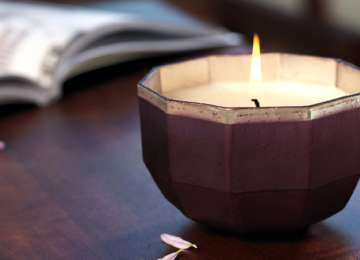Generally, a condo renovation is much more complex than renovating a landed house. Your neighbours have to deal with the noisy jackhammering activity on the other side of the thin wall, and you have to bring furniture ten storeys up one by one. Yes, condo renovation in Singapore is a tedious and even horrendous task. But still, it won’t stop many condo owners from carrying out a kitchen renovation in Singapore with the help of aninterior design firmand contractor company.
This move is too risky, and if not planned out well, a single mistake or unforeseen issue could cause the entire plan to collapse. Fortunately, these mistakes are preventable if you spend ample time on research.
This article will help you identify the grave mistakes you should avoid when carrying out acondo renovation in Singapore.
Terrible Condo Renovation Mistakes You Should Avoid At All Cost
Mistakes during a landed home renovation are already terrible. But the severity of their effects and the stress double up when they are done during a condo renovation.
The mistakes could branch out and provide leeway to other issues. Resolving these issues could drain you physically, mentally, and financially.
Avoid making these mistakes when remodelling your condo:
Touching the exterior part of your condo unit
If you ever managed to get permits for a condo renovation, most likely, it only authorised remodelling your condo unit’s interior design in Singapore. The exterior part is off-limits.
Generally, it means that you can’t tear down the walls facing the hallways to open up a new window. The permit may also prohibit repainting of the walls and installing front door lamps.
On the other hand, the permit may also restrict you from covering up and relocating the windows facing outdoors. You can’t also install window awnings, especially if your unit is several floors up.
If you want to prevent sunlight from entering your unit, you may want to use drapes instead. Awnings are unsafe for high-rise buildings and may affect their integrity.
Bathroom, bedroom, and kitchen renovation in Singaporemay be allowed in your unit.
Forgetting about the elevators
The elevator is your primary mode of transport from the ground level to your unit. Unfortunately, elevators are a shared facility. You and your neighbours ride it from time to time, and it can cause delay and inconvenience when you are transporting your humongous furniture and heavy construction equipment.
Most condominium buildings have separate elevators reserved for transporting utilities and equipment. These lifts are usually wider and have more carrying capacity.
You can ask your building management if your interior design firm and contractor can use this lift instead. Not only will it save you time, but you don’t cause inconvenience to other building tenants as well.
Forgetting about the parking space
Unlike a landed house with a garage or parking space, condo building tenants buy and pay for their parking space. Usually, one unit owner has one parking slot. The unit owner may pay for the second or extra parking slot.
Unit owners who are having a renovation forget that their contractors and theinterior design company staff in Singaporealso need a parking space when visiting the unit.
As a client, it is your responsibility to save a parking spot for the truck and vehicles of your contractors, designers, and engineers. You can let them borrow your space or pay for their parking.
Hiring a contractor that does not work with a condo renovation
Not all contractors accept condo renovation simply because there are too many challenges. There are too many dos and don’ts, limits, and things that need to be planned out. It includes the construction schedule, parking, the number of workers allowed, and so on.
Before hiring a contractor or interior design company in Singapore, make sure to ask them if they are willing to work with a condo renovation. Ensure that your contractor andinterior design firm have in-depth knowledge about condo renovation rules and capability, logistically-wise and operation-wise, to prevent unforeseen issues from arising.
Bypassing the condo board
The gravest mistake you can ever make when carrying out a condo renovation in Singapore is bypassing your condo board.
You cannot conduct any crucial unit renovation without consulting and getting the permission of the condo board. This offence can be punishable by law as well.
The condo board will provide the building renovation rules and regulations. They may require you to submit essential documents and permits. They will ensure that you are adhering to the guidelines during the entire course of the renovation.
The condo board may also help settle the neighbour’s concerns and even disputes regarding the construction.
Now that you know the mistakes you should avoid, let us move forward to the things unit owners must remember when carrying out acondo renovation in Singapore.

The Rule Book Of Condo Renovation
A quick disclaimer! Each condo building board implements different policies and rules, and regulations for condo renovation in Singapore. It is advisable to consult your board before conducting any remodelling projects.
Here are the most common and basic renovation policies:
Reputable contractor, an interior design firm, and engineers
Hiring the right people guarantees a near trouble-free project. They have the skills, knowledge, and capacity in conducting a safe and high-standard renovation project.
Documents and Permits
The unit owner must submit essential documents, such as the renovation plan, government IDs and other papers, to the condo management board to gain the permit.
Fees
Some condo buildings charge unit owners construction bonds, maintenance fees, and extension fees for remodelling projects. Make sure to pay the fees.
Allowable electrical load per unit
Condo buildings only allow a limited number of electrical sockets per unit. If your condo interior design in Singapore requires additional electrical outlets, switches, and air conditioning units, consult your building management first.
Structural and non-structural changes
It is essential to identify the parts that can and can’t be moved or touched during the renovation. For example, pillars, beams, walls, balconies, windows, and front doors are untouchable or limited from modification. Floorings, pipes, and additional wall division are allowed, depending on the agreement.
Conclusion
Don’t spend money on nasty renovation mistakes. Do your research and plan your project carefully before giving the green signal.
ProjectGuru
ProjectGuru is one of the best interior design companies in Singapore. Style your condo unit with ProjectGuru!











